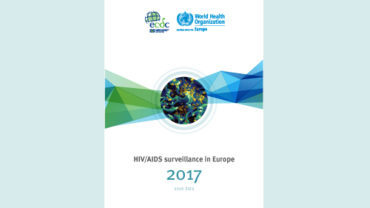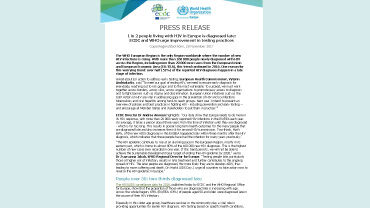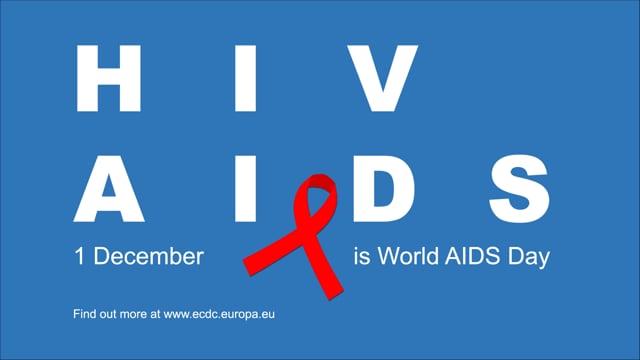World AIDS Day 2017
One in 2 people living with HIV are diagnosed late in the course of their infection. So late, that two out of three people with AIDS in the EU/EEA receive their diagnosis within only three months of discovering they had HIV. For World AIDS Day 2017, ECDC highlighted the problem of late diagnosis and the need for diversifying HIV testing approaches.
While we are seeing new HIV infections going down globally, Europe experiences a persistent HIV epidemic, with increasing numbers in the WHO European Region and only little changes in notifications during the last decade in the European Union and European Economic Area. This means that Europe lags behind in its HIV response and is not on track to meet the Sustainable Development Goals for 2020 which include a reduction in new HIV infections to fewer than 63 000 for Europe and Central Asia.
One trend, observed across the region over the last decade, is 1 in 2 people living with HIV are diagnosed late in the course of their infection. So late, that two out of three people with AIDS in the EU/EEA receive their diagnosis within only three months of discovering they had HIV. According to ECDC estimates, on average it takes a person about three years from the time of HIV infection until they are diagnosed – which is far too long.
Late diagnoses suggests persistent problems with access to, and uptake of, HIV testing and counselling in many countries.
Early diagnosis of HIV is important as it allows quicker linkage to care and antiretroviral treatment. This in turn increases people’s chances of living a longer and healthier life. At the same time, effective treatment leads to an undetectable viral load and this practically eliminates the risk of transmitting HIV further.
What can be done?
The HIV epidemics in European countries vary, as do their health systems. Therefore, prevention and control strategies cannot be the same across the region.
However, to reduce the future number of new HIV infections, Europe needs to focus on three main areas:
- prioritising effective prevention such as pre-exposure prophylaxis for HIV and promoting condom use;
- diversifying and complementing HIV testing approaches by using a variety of methods and,
- rapid access to treatment for those diagnosed.
HIV testing in the community setting and self-testing could be valuable strategies to increase access and uptake of HIV testing. This should be accompanied by measures to ensure all ages are appropriately targeted by sexual health services.









